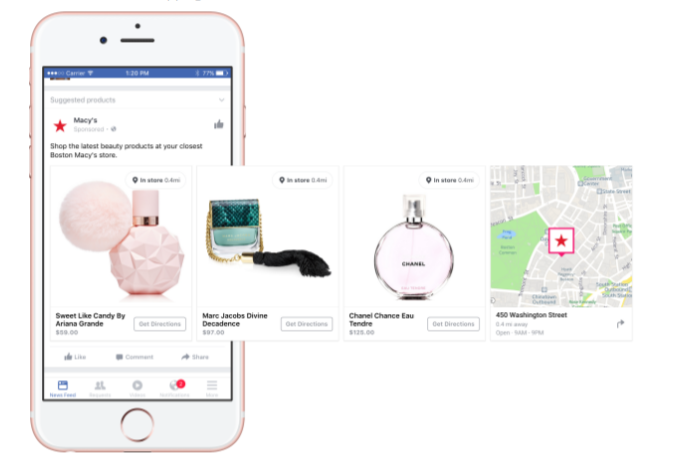When To Use Facebook Dynamic Ad Retargeting vs Traditional Retargeting


Retargeting has long been an effective way for retailers to reach prequalified, already proven leads and push them further down the sales funnel.
And though Facebook has often been at the forefront of these efforts, with the advent of dynamic product ads, the platform has officially become an all-out leader in the retargeting arena.
But what’s so different about these new types of retargeting ads? When should you use them and when should you stick with your old methods? And how much of your budget should you invest?
Let’s look at each retargeting method more in depth.

With Facebook dynamic ad retargeting, your retargeting efforts are powered by your live, real-time product feed.
As such, your ads reflect only the products you currently have in stock and available for purchase on your site.
For one, this makes it easier on you (the brand or advertiser)– no more tedious updating or tweaking your ads every time you sell out or add a new product. Creating your retargeting ads only requires installing the Facebook pixel on your website and connecting with your product feed in Ads Manager.
But more importantly, dynamic retargeting makes it easier to promote the most relevant items for each customer who views your ad, thereby improving conversions and sales over the course of your campaign.
Dynamic ad retargeting is also ideal for flash sales and promotions, as it reflects real-time pricing data and inventory only. There’s no wasted ad spend on sold-out products, and customers get access to the best deals instantly and live in their news feeds.
Just look at Designer Living, (home furnishing retailer) who was able to increase their Facebook revenue 573.85% through the implementation of Dynamic Ads.
One of the main challenges for Designer Living was that they were not optimizing their advertising strategy on Facebook. Although they were running organic and paid Facebook ads prior to CPC Strategy’s involvement, they were not leveraging advanced targeting and display capabilities to increase conversions.
To grow revenue and fine tune their Facebook advertising strategy, CPC Strategy set specific objectives and designed conversion-focused ads – geared towards generating sales.
The introduction of Dynamic Product Ads helped to close the loop, create more conversions, and turn Facebook into an impactful ecommerce channel for Designer Living.
Traditionally, the only way to do retargeting on Facebook was to use the “Custom Audiences” tool.
This allows you to manually create a custom audience comprised of only people who have previously visited your site, added a product to their shopping cart or taken some other action that has qualified them as a lead.

Using Custom Audiences in retargeting efforts can certainly be effective, but the time and tedium it takes to configure is significant.
If you want to retarget only those who view a certain page or product, you not only have to use your analytics to determine who those users are, but you have to create a custom audience just for them and, finally, upload all the creative and set up a whole ad campaign based around it.
It’s a granular, detailed process, and it can be pretty hard to scale if you want to retarget more than a few audience segments.
Throw in the fact that your products and prices likely change daily, and you’ve got even more work on your hands – work that’s necessary and urgent if you don’t want to waste ad spend.
Still, Custom Audience-based retargeting efforts have their place. Though not the ideal solution for large-scale retargeting, there are some situations in which they may be better than dynamic ads for the job.
So, when’s the best time to use Facebook dynamic ad retargeting? And when should you revert back to the older, Custom Audience-based methods?
Each strategy has its best-use cases, and the right one really depends on your overall goals, your budget and the scale of your efforts. As with anything, there’s no one-size-fits-all solution here.
Custom Audiences are best if you’ve only got a small catalog of products – maybe a dozen or less. With fewer products, you can more easily and effectively set up segmented campaigns that can drive customers closer toward a sale (without wasting a lot of time and effort in the process.)
They’re also great if you’re driving customers toward a very specific action—like buying one specific product, booking one specific service, etc.
If you’ve got more than a dozen products, your inventory or pricing is constantly in flux, or you just want to up sales in a general sense, then dynamic ads are for you. They’re also super scalable, so if you expect your retargeting efforts to expand, they can help make it easier.
“Dynamic ads allow retailers to scale to all of their products more efficiently,” Stephen Kerner, Sr. Manager of Retail Search Department at CPC Strategy said.
“Dynamic Ads are great for bottom of the funnel (closer to the purchase stage), but if you want to drive more traffic to your site you will need to market to people who have not been to your site before. That’s when targeted and custom audiences / look-alike audiences come into play.”
“It depends on the retailer, but so far we’ve seen a lot of success with Facebook retargeting efforts for apparel. Watches specifically and hobby-related retailers are also doing very well.”
Takeaways: Both dynamic ads and custom audiences can lend themselves to solid ROIs. You can even use both methods in tandem, leveraging each one for different goals and objectives. Just make sure to test and measure as you go for best results.
